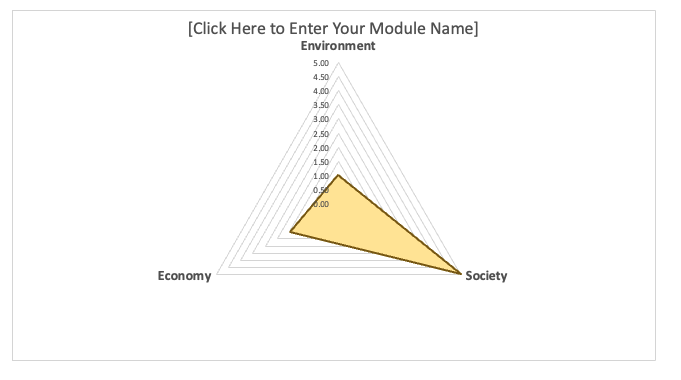Mapping Your Course to the SDGs
This self-reflection tool is designed for further integration of SDGs into your curriculum, assessments, learning outcomes, or other action-oriented pedagogies.
Look through the list of SDGs and specific targets and indicators.
- To what degree and depth does your course address each SDG?
- Does your course have direct or indirect reference to an SDG?
- Do you talk/write about it while students listen/read?
- Do students use the SDG to make meaning of a concept?
- Are connections between SDGs and the discipline made?
- Are students assessed on SDG knowledge or skills?
- Are they expected to do something with the SDG and do they get feedback on it?
- Do students directly act towards addressing the SDG through community learning? Do they reflect upon their learning? Is it assessed?
- Do students’ actions have impact beyond their own learning?

You can download the spreadsheet template to input your own scores for each SDG.
This provides a visualization map of how a single course addresses the SDGs. Consider replicating this exercise with colleagues to reflect on how students experience learning for sustainability across their program of study.
Use this scale to score each SDG in your course:
0 = no coverage or unrelated SDG
1 = Indirectly related to the SDG
2 = Connects the SDG to one’s own discipline
3 = Address at least one SDG Target
4 = Assesses SDG knowledge or skills in relation to learning outcomes
5 = Students act to address the SDGs with community or industry partners
The next step is reflection. This is important for seeking feedback and intentional, iterative course design. Consider answering these questions in the spaces provided below. You can download a copy of your reflection using the tab on the left.
Reflection Questions (for educators)
1 – Did you identify at least one SDG and/or SDG Target covered in your module? How is that topic introduced in the context of the wider discipline or societal need?
2- Do you inadvertently cover concepts expressed by the SDGs? If so, how could you signpost those topics to increase student understanding of the SDGs and sustainability literacy?
3 – Do you elaborate on the interconnected nature of the SDGs? Was this used as a gateway to inter- or transdisciplinary discussion? What connections might you design in your course?
4 – Do you cover SDGs from more than one SDG Pillars (economic, social, environment) as displayed in the second graph (triangle)? If so, how do students perceive this relationship? What is valued in your discipline?
5 – How might your further enrich your course with the SDGs such as activities, discussions, group projects, assessments, etc to fulfil course learning outcomes?

Further, the mapping tool generates a summary of how the course meets environmental, economic and societal needs. A reminder that not all three are equivalent – the Wedding Cake Model from Stockholm Resilience Centre, Stockholm University from the previous section demonstrates how environmental considerations are foundational for societal and economic development.
This page was derived from the SDG Curriculum Toolkit by John Barimo, Catherine O’Mahony, Gerard Mullally, John O’Halloran, Edmond Byrne, Darren Reidy, Maria Kirrane licensed under a Creative Commons Attribution-NonCommercial 4.0 International License from https://www.ucc.ie/en/sdg-toolkit/.

